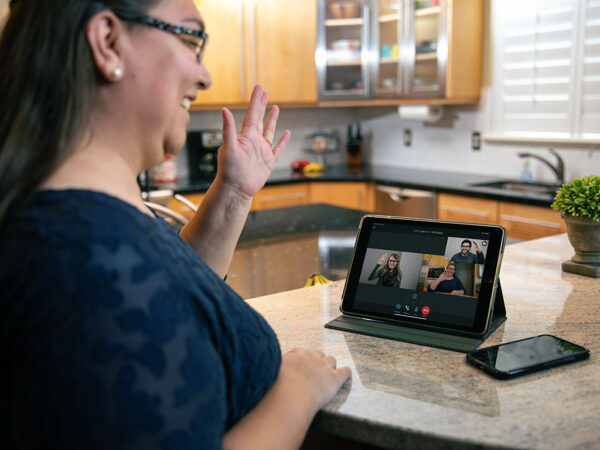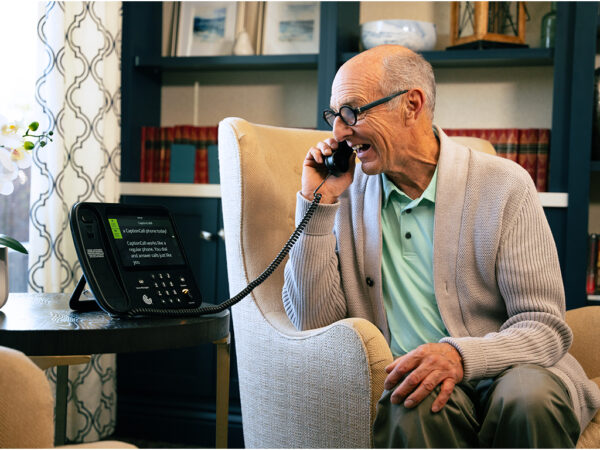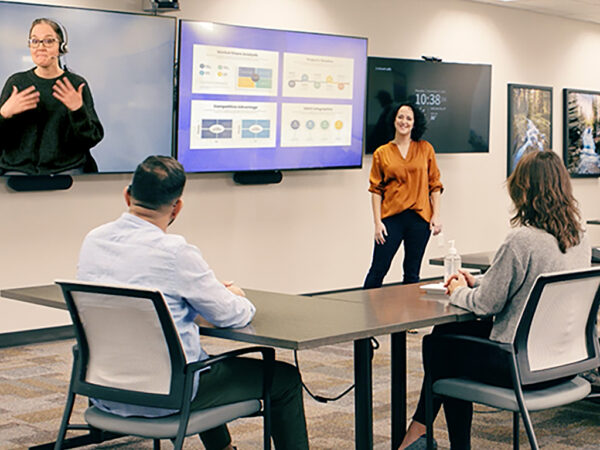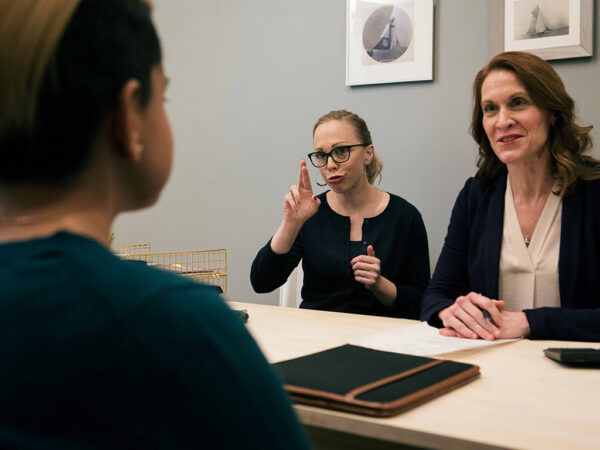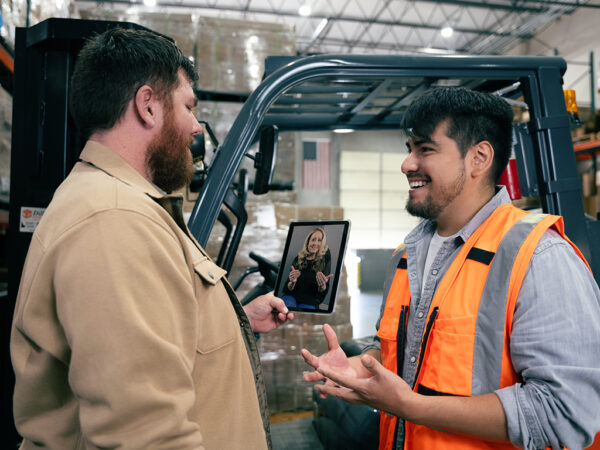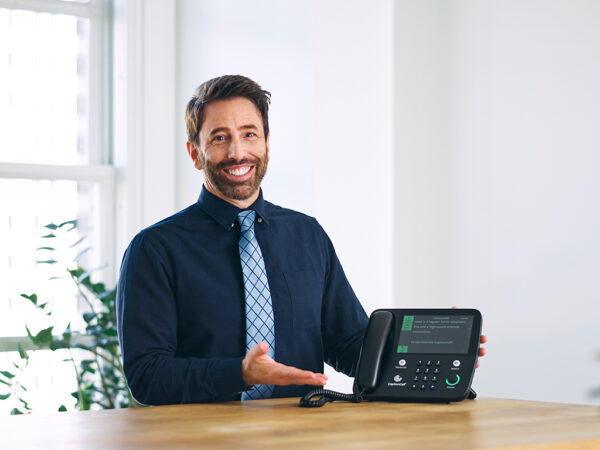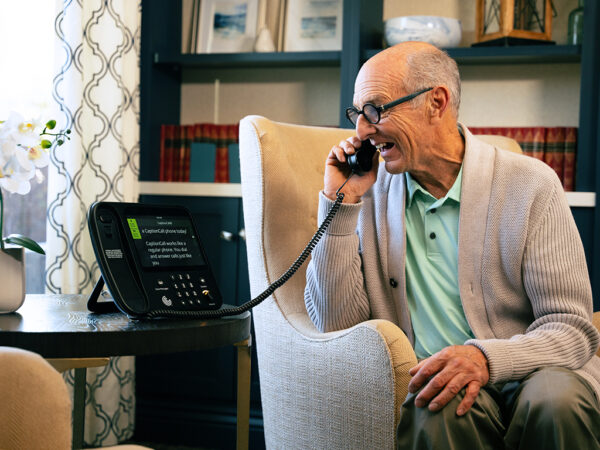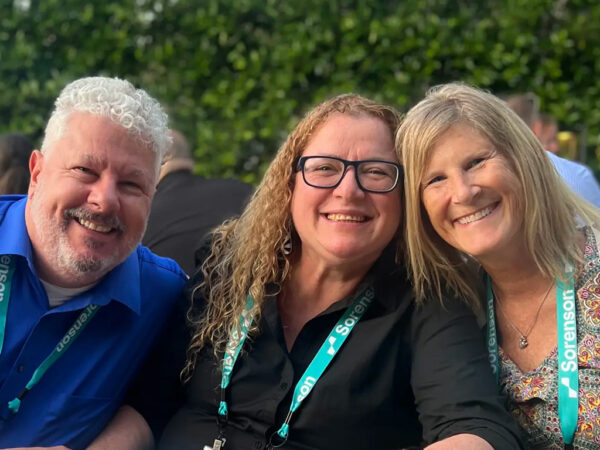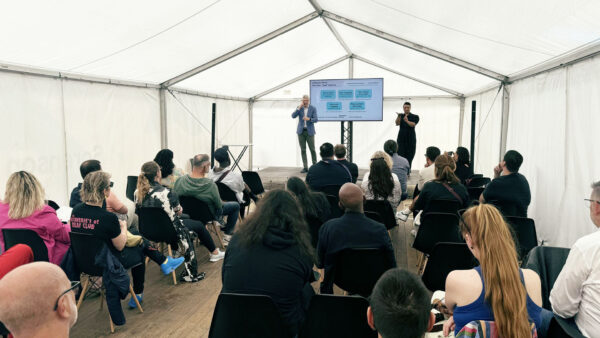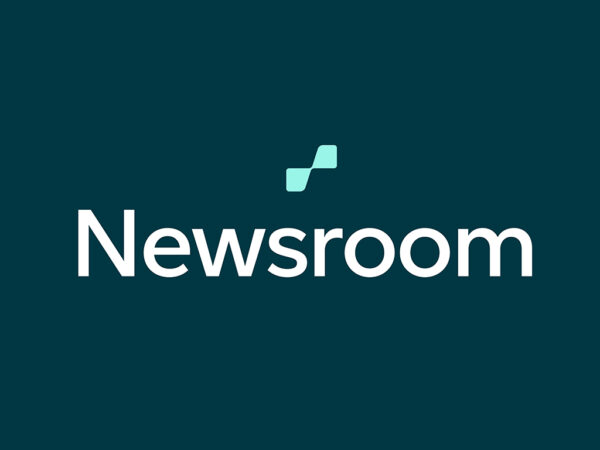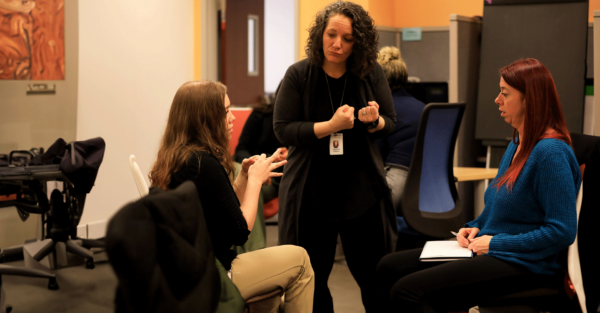Hearing Loss in the Workplace
August 29, 2024

Hearing loss in the workplace is more prevalent than most people realize. More than one out of every seven Americans acknowledge they have some trouble hearing. The Hearing Loss Association of America (HLAA) says hearing loss is the third most common physical condition, with heart disease and arthritis as the top two. And of the 15% of people who report having hearing loss, the HLAA says 60% are either working or in school.
That means there’s a good chance some of the people working with you have hearing loss, and they may not disclose it to coworkers or employers. It also means most workplaces would benefit from measures to be more accessible and inclusive of the tens of millions of people in the workforce with hearing loss.
- Read about a day in the work life of a hard-of-hearing professional
- See more hearing loss statistics
- Review accessibility options for your workplace
Why your workplace needs to be inclusive of hearing loss
Given the vast number of people who experience hearing loss, it’s not plausible to exclude them from the workplace.
The good news is that many steps toward an accessible work environment cost you nothing, nearly all of them will provide benefits to your entire workforce, and making your workplace more inclusive of people with hearing loss could make it more attractive to valuable hard-of-hearing employees…like Katie:
A day in the work life of a hard-of-hearing professional
by Katie Werner
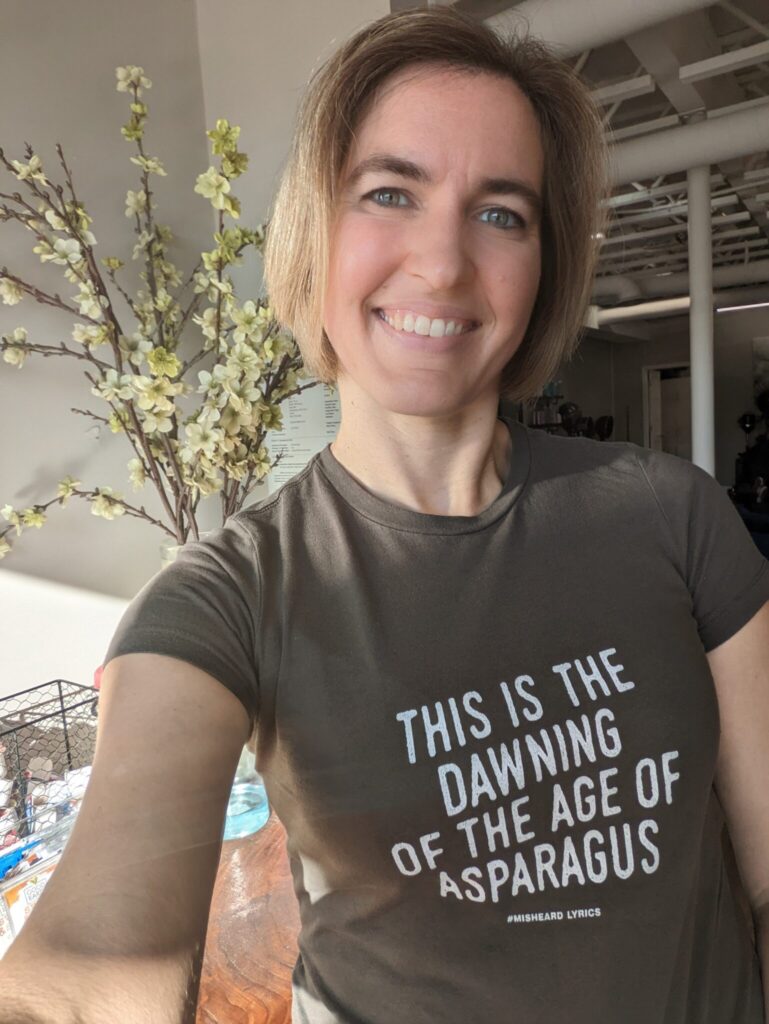
Every day, five to ten times per day: that’s how often I think about my disability at work. And the more I fear people will be weirded out by it, the more distracting it becomes.
October is National Disability Employment Awareness Month in the US, which is in part about building inclusion in the workplace.
Here’s my story:
I have two hearing aids. In layman’s terms, I have a genetic 40% loss that prevents me from catching little sounds. Was that pat, cat or… gat? 🤦 (Hence the shirt in my photo that cracks me up. 😁 #MisheardLyrics)
You could say this only impacted my ears, unless you also consider these types of experiences:
😳 The ear bud phone at my desk…that I can’t wear. *deeply missing speakerphone*
😳 The group meeting… where I try to wedge myself in the middle to make sure I can hear everyone. *just hoping there’s space*
😳 The awkward plant tour…where I have to shove my aids in my pocket to wear hearing protection then stay awkwardly close to the speaker. *don’t bump my expensive pocket!*
😳 The all-employee meeting…where I can only understand certain presenters even if there’s a mic *pretending to engage…ick*
😳 The cell phone call, when I have to press the button on my hearing aid to change the program and prevent squealing. *again missing speakerphone!*
😳 Talking to my neighbor…and realizing I didn’t push the button to reprogram back to normal, so her voice is distorted. *wondering if they’ll wonder why I keep poking my ears*
😳 Learning new names: can you please spell that, so I have even the slightest chance of saying all the sounds? *who the heck did I just meet?*
😳 Sitting in office space…where everyone tries to speak so quietly to avoid bothering others. *100x harder*
😳 The four-day-battery-life, which is just long enough to be in an important meeting and have the hearing aid yell “battery!” into my ear, promptly making itself into an ear plug. *panic*
😳 The realization that very few people at my new company know…and I have to keep sharing because otherwise I can’t get what I need. *yes, I am other*
And even though the stigma reduces as I get older, I sometimes still feel like that little kid trying with all her might to hide her disability (which gave me so many abilities over my life that I feel guilty being ashamed of it!).
Hiding…is emotionally exhausting and terribly distracting. But how distracting it is may depend on you. It makes all the world of difference how people react to my needs and quirks (I’m human after all!).
✖️ If it seems an awkward “why the heck did she say that” moment, I’ll have a hard time refocusing on why we’re here.
❤️ If someone recognizes the situation and says just about anything with a smile, that goes a ridiculously long way to calming the anxious distraction.
Hearing-loss statistics
Katie’s story hits home for a lot of people, in the U.S. and in all corners of the world.
The World Health Organization (WHO) reports more than 1.5 billion people — or roughly 19 percent of the world population — with hearing loss in at least one ear. By 2050, the organization estimates that number will rise to 2.5 billion. Using world population projections from the United Nations that the global population will hover around 9.8 billion in 2050, that would mean more than one out of every four people would have hearing loss by mid-century.
In fairness, those statistics cover the full range of hearing loss, and people with slight to mild hearing loss may consider it an inconvenience or annoyance and not something that interferes significantly with daily activities or communication. However, the WHO currently reports 430 million people worldwide with hearing loss that requires intervention to address the impacts, and the organization projects 700 million people will be in that situation by 2050.
Are rates of hearing loss increasing?
What do these numbers mean? Is hearing loss becoming more common? In short, yes. When the WHO first reported sensorineural hearing loss statistics in 1985, it estimated 42 million people worldwide had moderate to profound hearing loss out of a global population just shy of 4.9 billion. In the four decades since, the world population has grown by 63%, but the WHO’s latest hearing loss estimate of 466 million people with disabling hearing loss is a 1109% increase.
Moreover, while the rate of hearing loss increases with age, it’s increasingly impacting young people, largely due to increased noise exposure. In a 2022 study, researchers concluded that up to 1.35 billion teens and young adults globally are at risk of permanent hearing loss due to unsafe listening practices.
Hiring Veterans with hearing loss
Hearing loss disproportionately affects Veterans. It is the most common military service-related condition, affecting at least 3.6 million Americans. The most recent available numbers from the Department of Veterans Affairs show more than 1.3 million Veterans qualified for disability compensation for hearing loss in 2020, and another 2.3 million claimed compensation for tinnitus.
Those numbers only cover individuals with hearing difficulty significant enough to qualify for benefits, not those who experience mild to moderate hearing loss. A 2016 study from the Centers for Disease Control (CDC) suggests 27% of Veterans have at least some trouble hearing.
For employers who pride themselves on hiring Veterans, hearing loss inclusion in the workplace is a must.
Accessibility measures for hearing loss in the workplace
Making your workplace more inclusive for people with hearing loss doesn’t have to break the bank, and as part of a robust accessibility strategy it can boost productivity and performance for your whole team. Several of the solutions below have no additional associated costs:
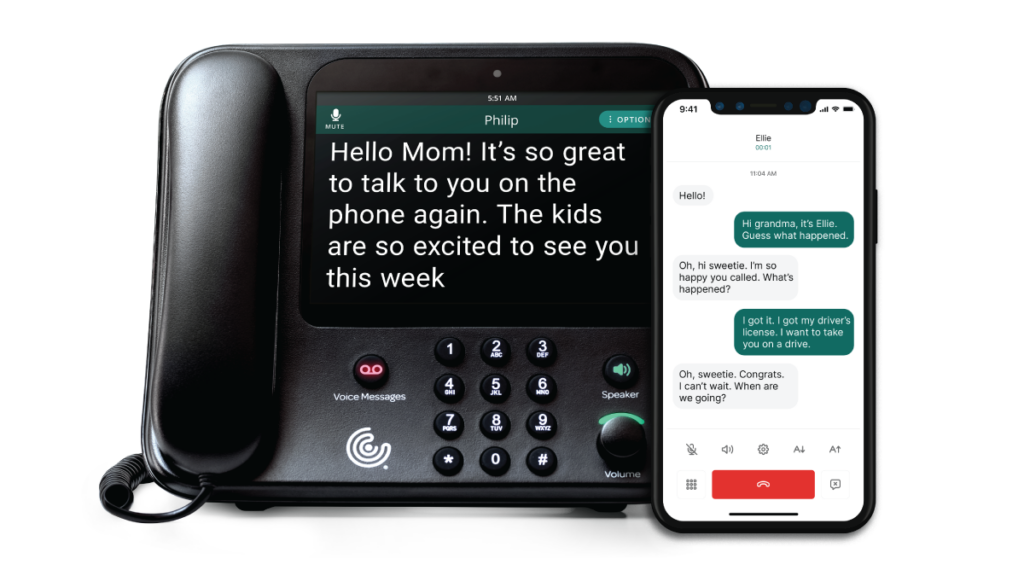
Employees whose hearing loss makes captions necessary to use the phone qualify for call captioning at no cost — to them or to their employer — through an FCC-funded program.
Eligible individuals may already use call captioning services like CaptionCall by Sorenson at home, and they can get the same service for work. The service creates live captions of phone conversations and displays them on the large, interactive screen of a specialized phone, which CaptionCall also provides at no cost as part of the service. When qualified individuals request call captioning for work, the CaptionCall team will follow up with the employer about installation.
Hard-of-hearing workers who aren’t at a desk all day can qualify for captioning on the go if they need captions for their phone calls. CaptionCall Mobile is a mobile app that generates instant, accurate captions of cell phone calls and displays them on screen like a text messaging thread. The no-cost app has the same eligibility standards as CaptionCall, and users can download it, self-certify their need directly through the app, and start using the call captioning service within minutes.
Both CaptionCall for desk phone-based captioning and CaptionCall Mobile’s mobile app-based call captioning include two additional benefits to real-time captioning:
- Saved transcripts of calls that users can review for details they may have missed, which is particularly useful for verifying details, including numbers, dates, and names.
- Compatibility with Bluetooth hearing aids to not only avoid interference but allow users to pair hearing aids with their device for better audio delivery.
Put it in writing: agendas, notes, follow-up
Your entire team — regardless of hearing ability — can benefit from written summaries of key information. Making a habit of sharing expectations, action items, presentations, and notes in writing provides insurance against team members mishearing or forgetting important details. It’s doubly beneficial to document project progress and timelines for your records.
Captioning
The same benefits we mentioned above for phone call captioning apply to situations outside of phone calls. For meetings, media, training, or conferences, captioning audio increases accessibility for people with hearing loss, visual learners, and non-native language users.
CART Captioning
Communication Access Realtime Translation (CART) captioning produces live captions of spoken and unspoken audio so users can follow along in real time. The majority of live captioning services — including built-in captioning on smartphones and video conferencing software — use Automatic Speech Recognition (ASR) software to produce low-cost captions.
Closed Captions, Open Captions, and Transcription
Many people use closed captions to consume media, even if they have perfect hearing. It’s become a staple of how we view television, movies, and online videos because it’s helpful for hearing loss, noisy environments, and listening comprehension. Open captions serve the same purpose. The only difference between them is that users can turn closed captions on or off, while open captions are a permanent addition to your media that appear for everyone.
Transcription services create a full text version of your live or recorded audio as a document to accompany your media, distribute as a supplement or substitute for note-taking, and save for your records.
Assistive-listening systems
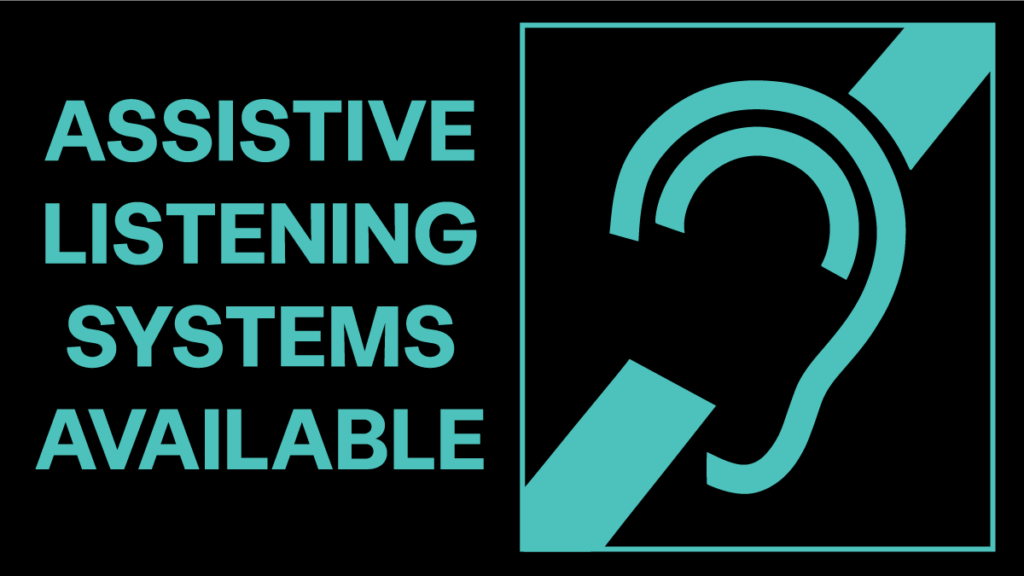
Assistive-listening systems (or assistive listening devices) use one of several technologies to amplify sound through a receiver, which could be a hearing aid, cochlear implant, or headset. The most popular are hearing loops, or induction loops, that pair with telecoils built into most hearing aids and allow wearers to tap directly into a sound system for clearer audio by bypassing background noise.
Providing hearing loops or other assistive listening systems in the workplace can make meetings and presentations easier to follow for hard-of-hearing employees. Even if they wear hearing aids, crowded and busy spaces may make it difficult to hear clearly. In one study, 13% of adults reported some trouble hearing while using hearing aids, so assistive listening devices can offer a helpful boost.
Keep in mind, though, that the majority of people who could benefit from hearing aids don’t wear them. Only about 14% of Americans with hearing loss use hearing aids, but they can still make use of assistive listening systems through a receiver and headphones.
Additional benefits of accessibility for hearing loss
Embracing solutions to make your workplace welcoming and accessible for employees with hearing loss will set it apart as a desirable work environment for hard-of-hearing talent and increase the efficiency of your team. But there are also downstream impacts of inclusion:
Attracting top candidates
In-demand talent — with or without hearing loss — can be selective about which employer to lend its skills, and companies that commit to inclusivity have an edge, with 76% of job seekers saying that’s an important factor in evaluating job offers.
Appealing to values-driven customers and partners
Decision-makers care about the values they’re buying into, including accessibility. Partners and investors weigh Environmental, Social, and Governance (ESG) policy, as do a growing number of consumers and job candidates; 59% of consumers prioritize choosing businesses that actively promote equity and inclusion.
Reduce employee turnover
While solutions to welcome people with hearing loss in the workplace offer broad benefits, they’re not yet standard for many employers. Inclusive environments that set employees up for success and reinforce a sense of belonging encourage internal growth rather than leaving for positions at less accessible companies.







